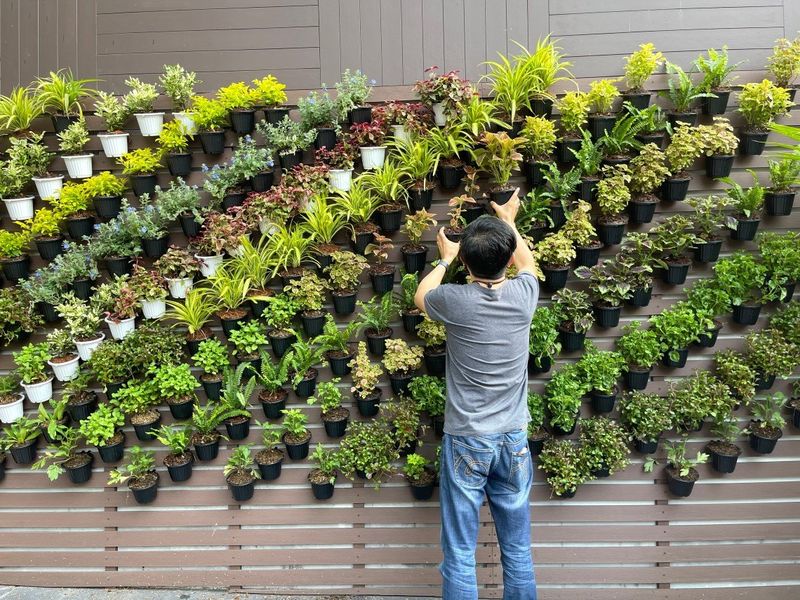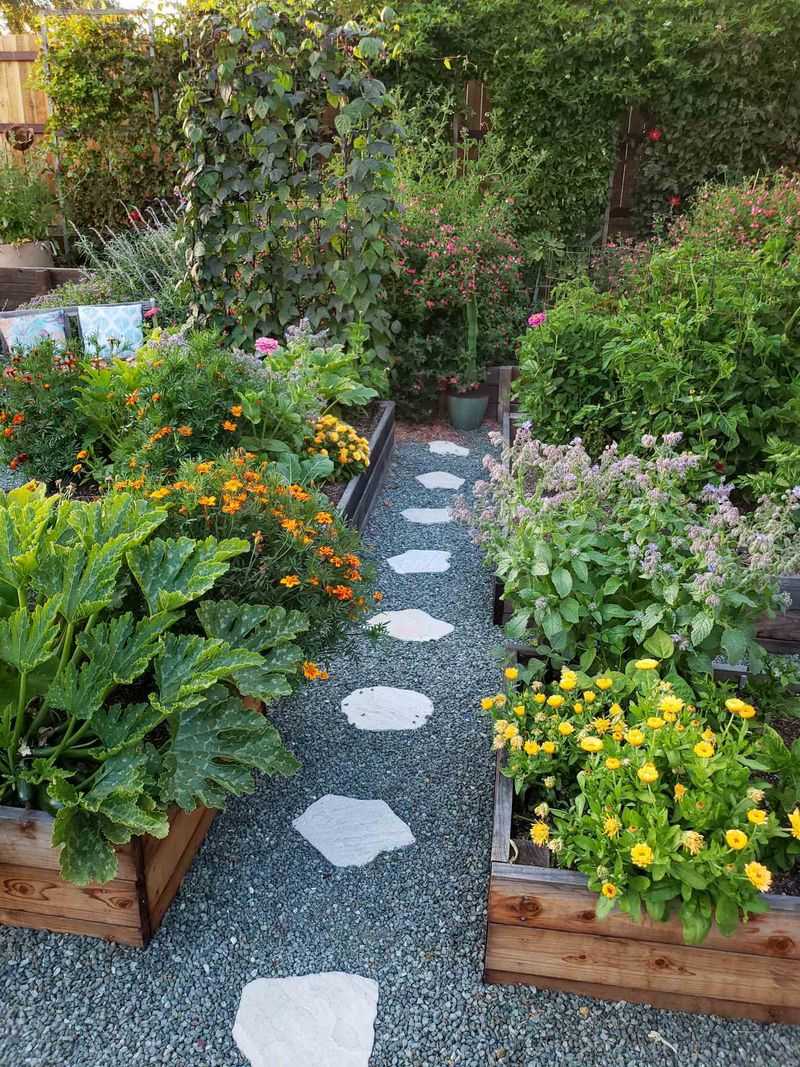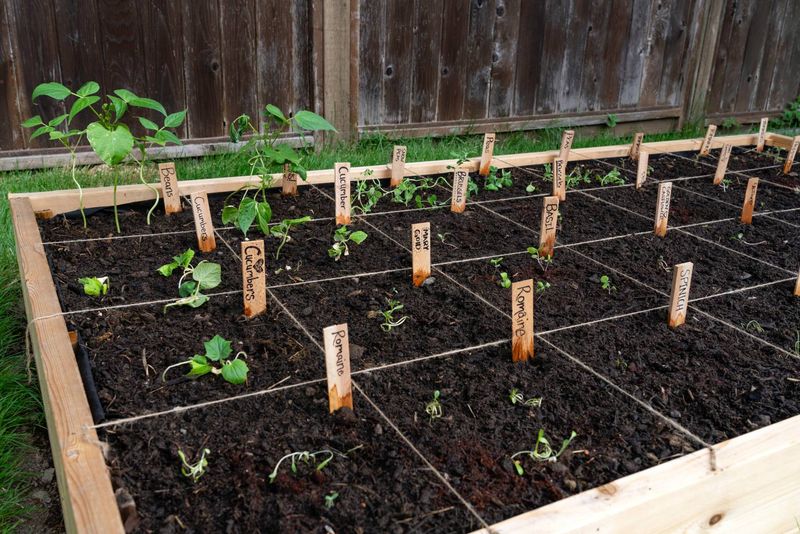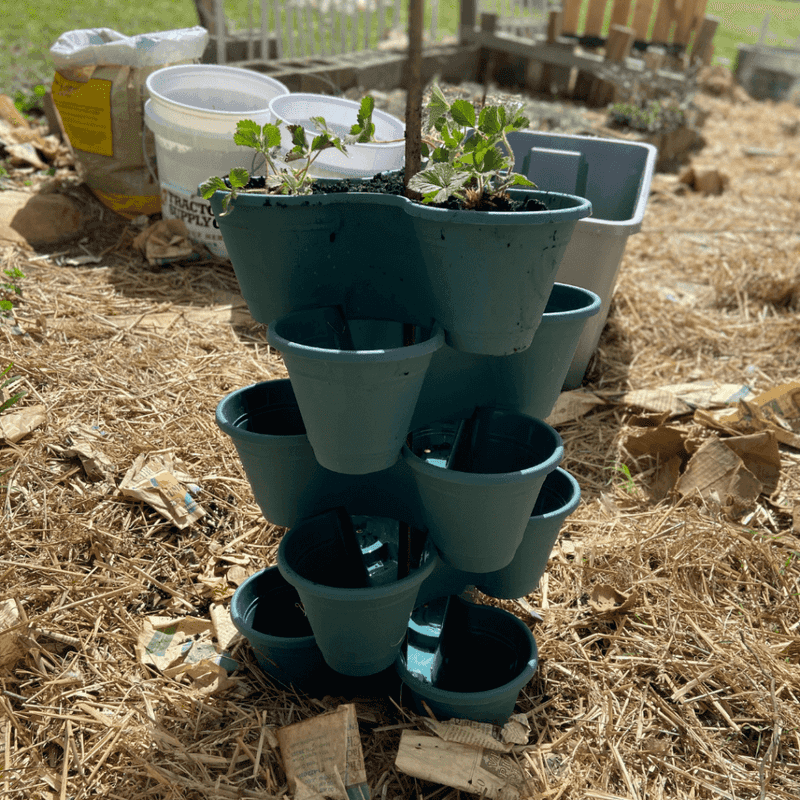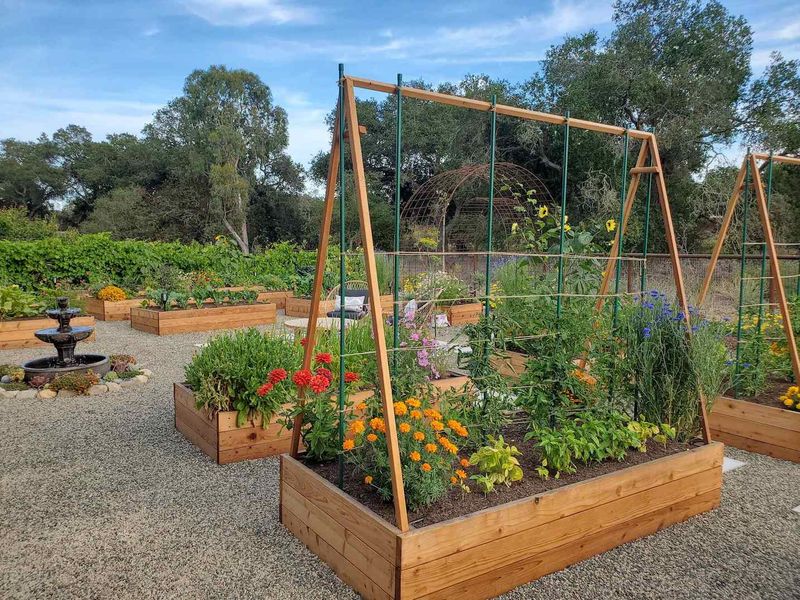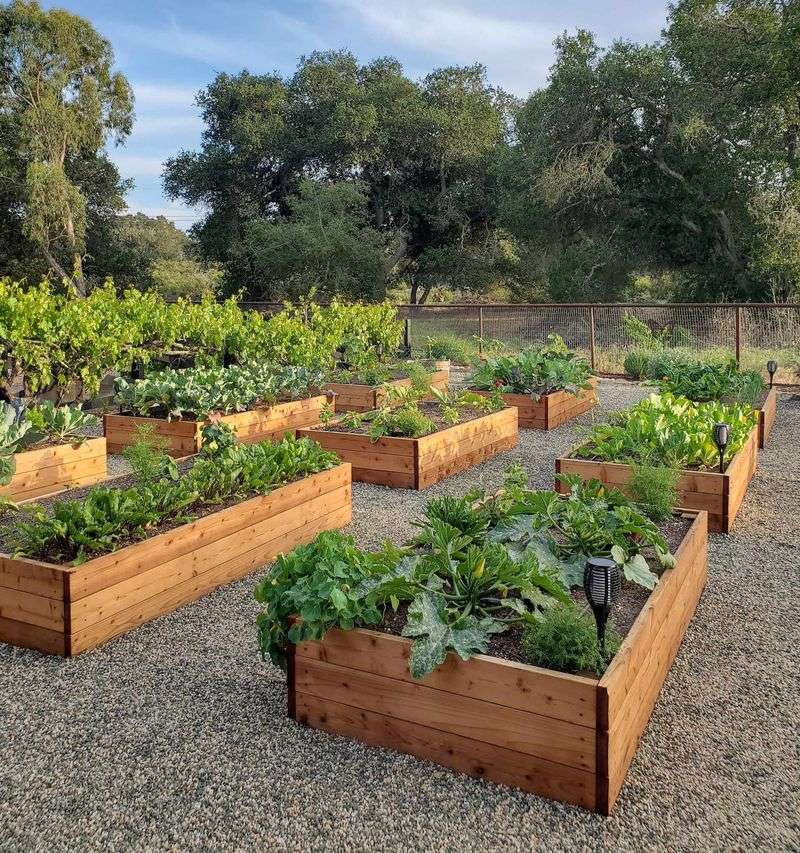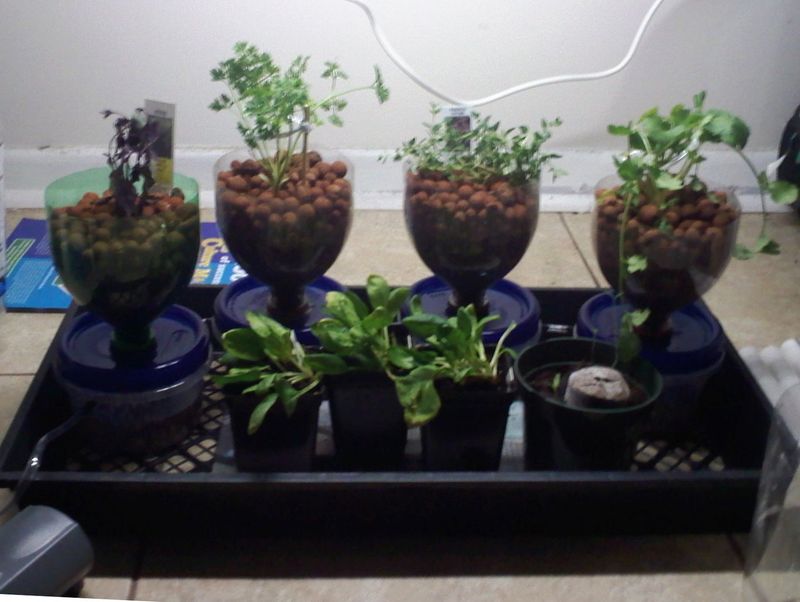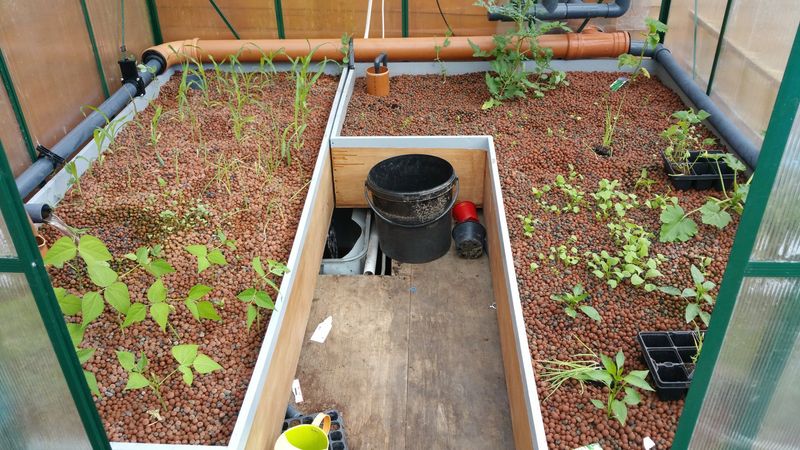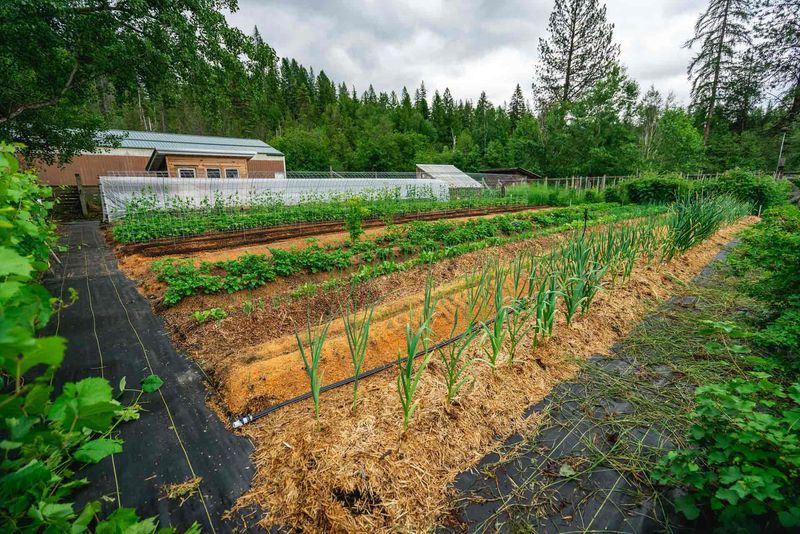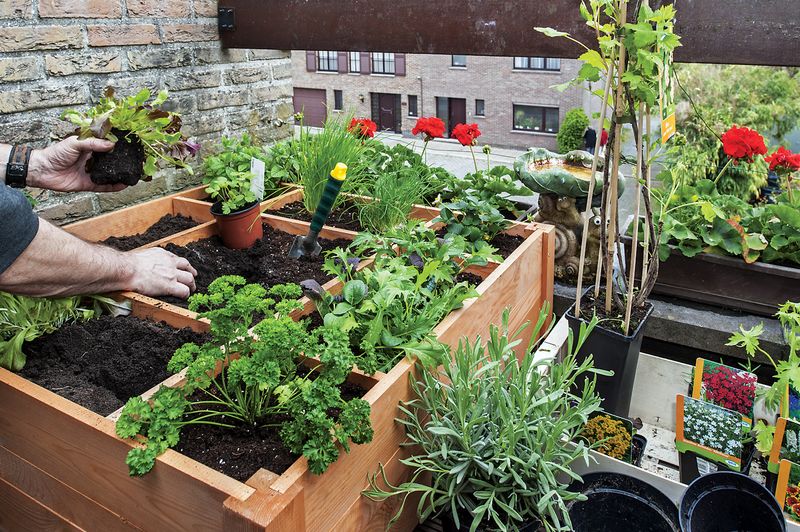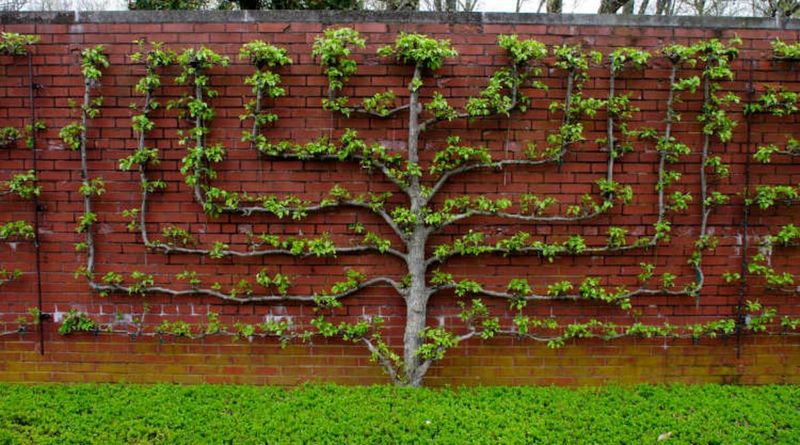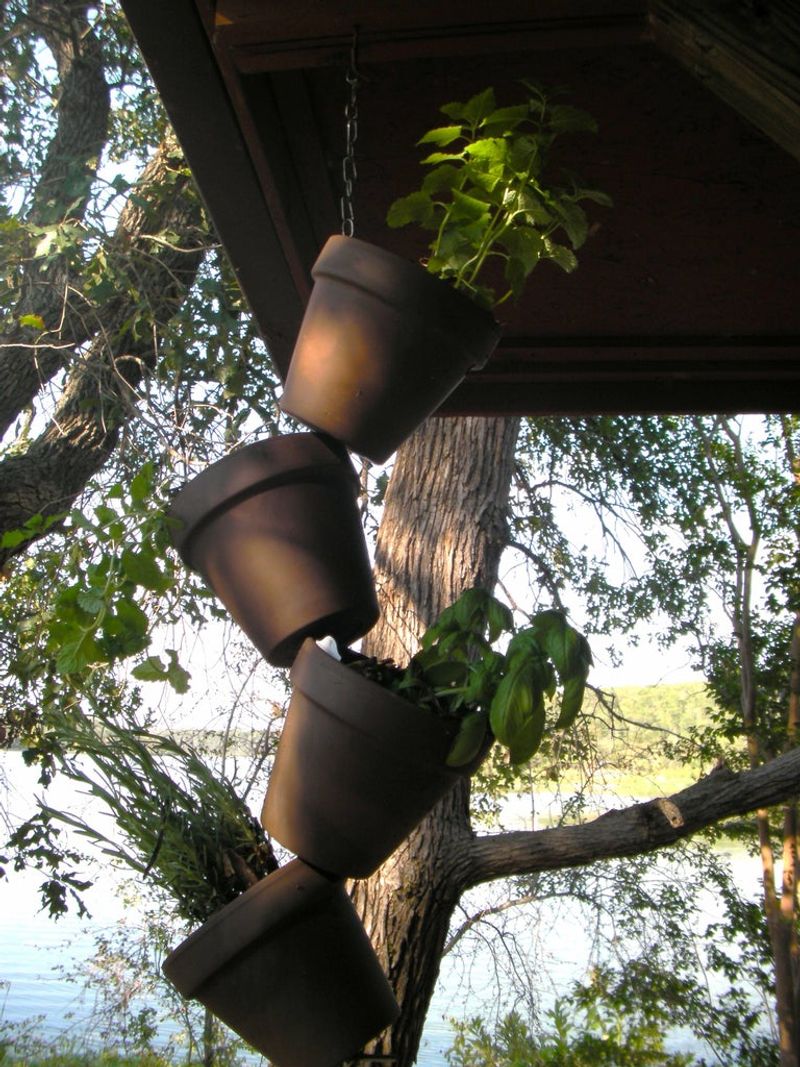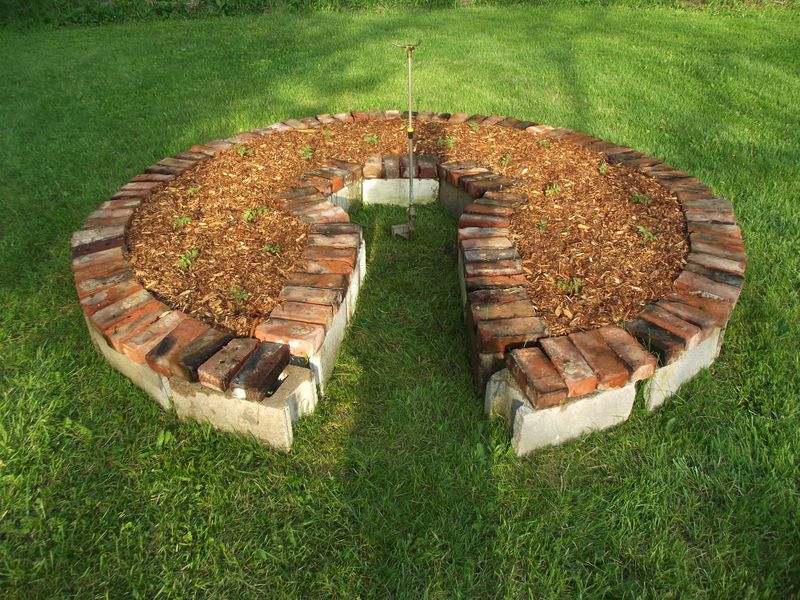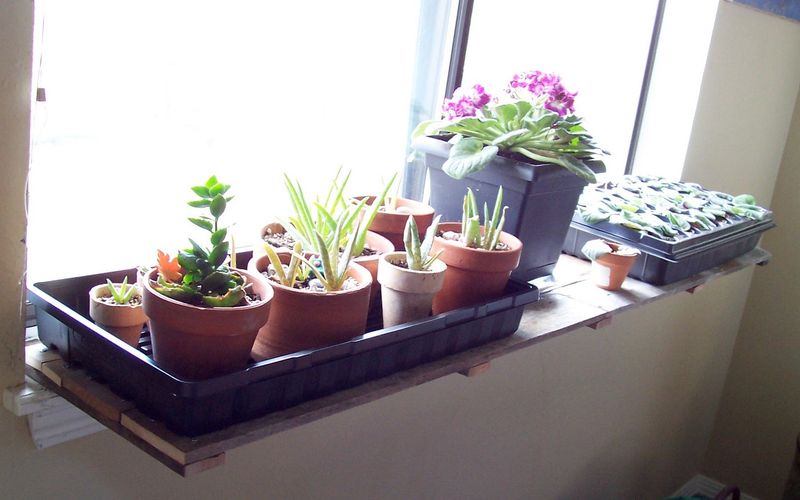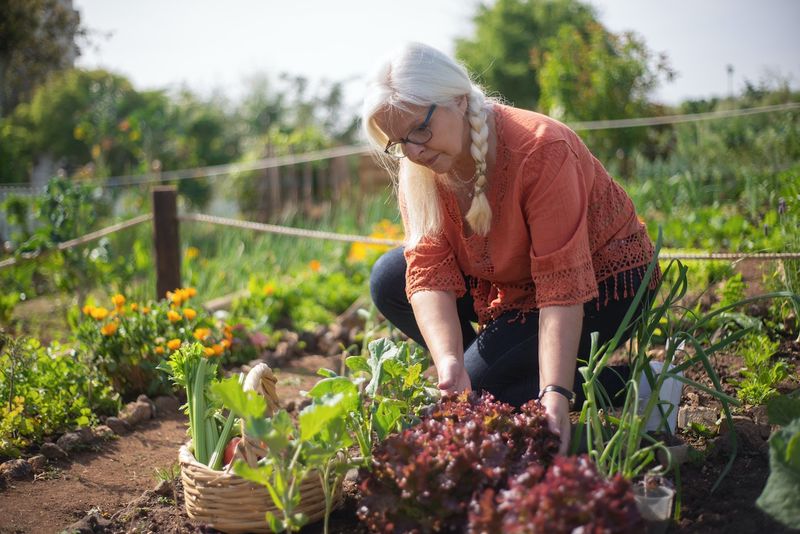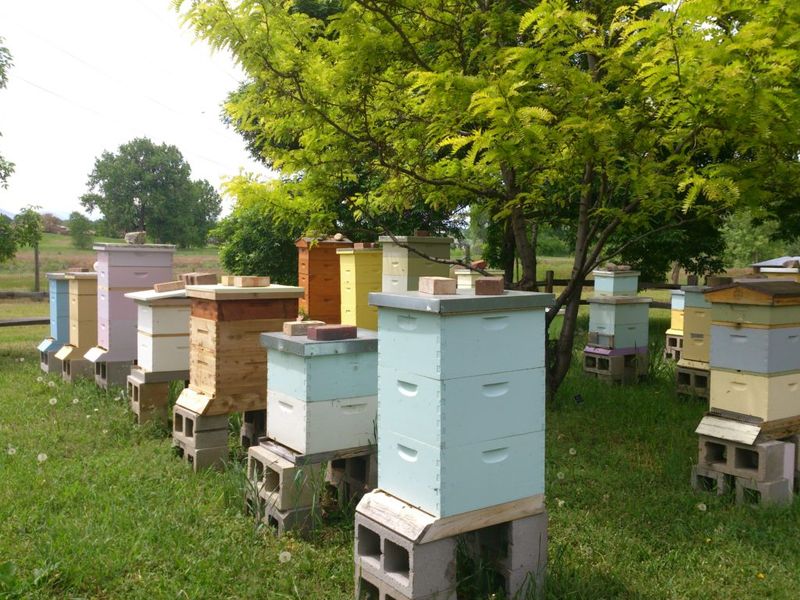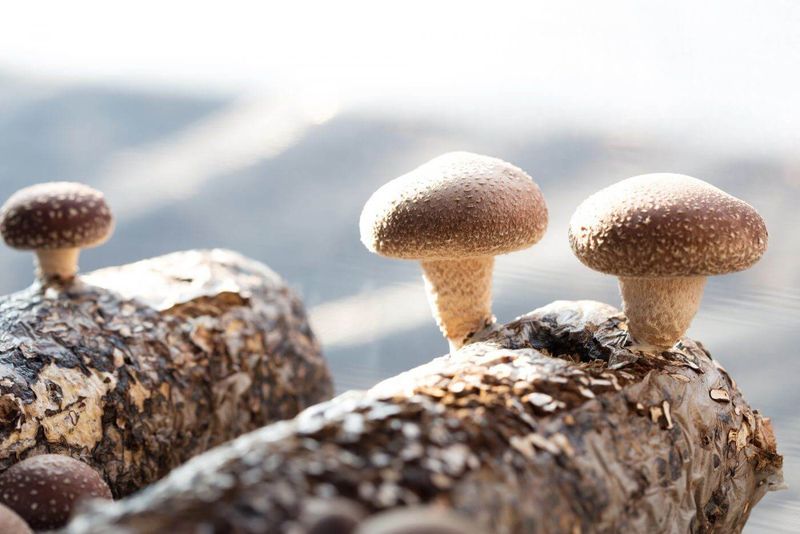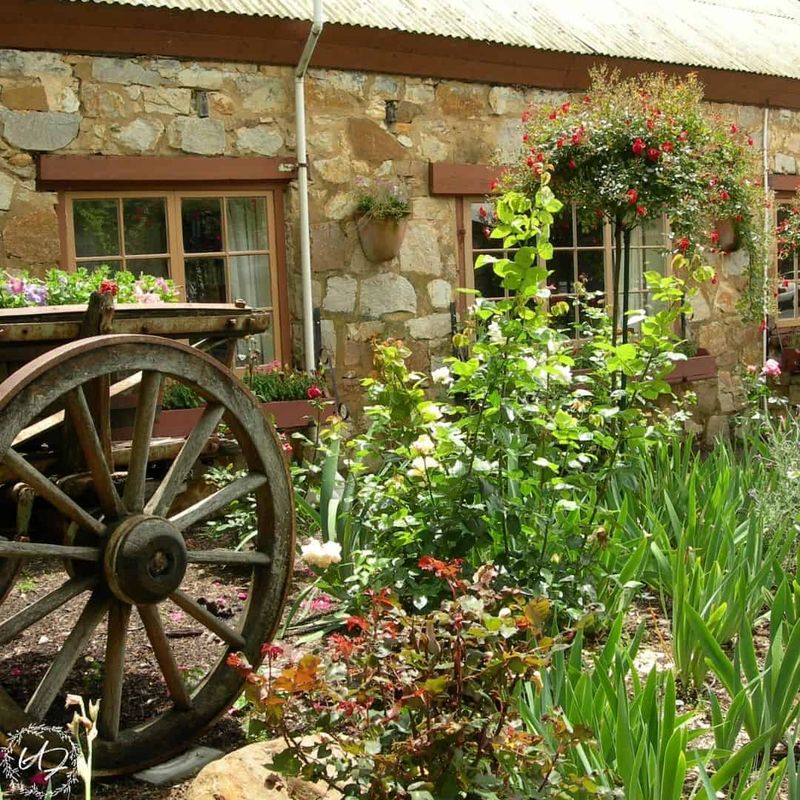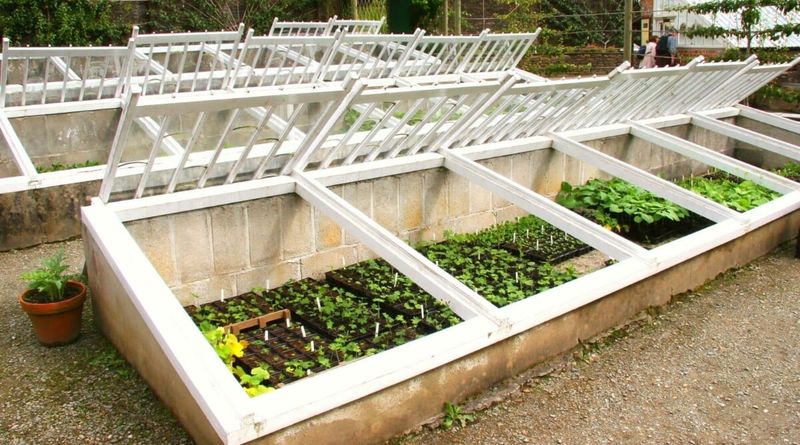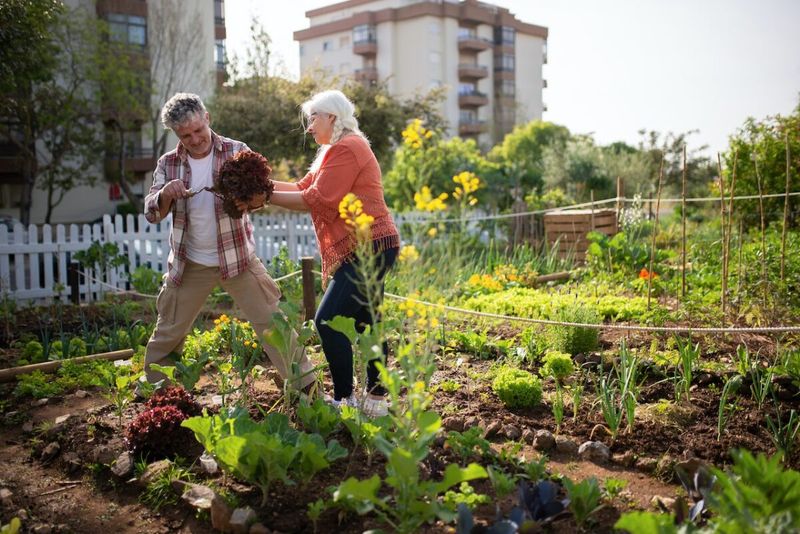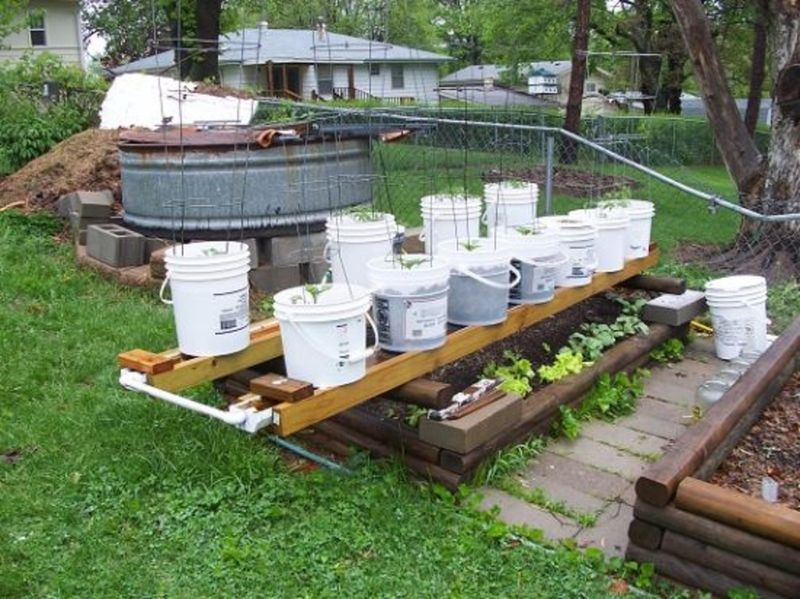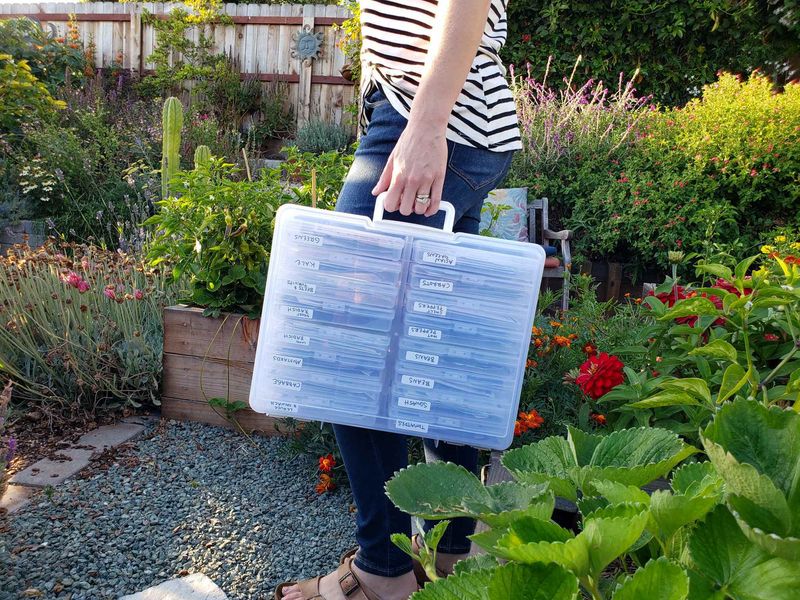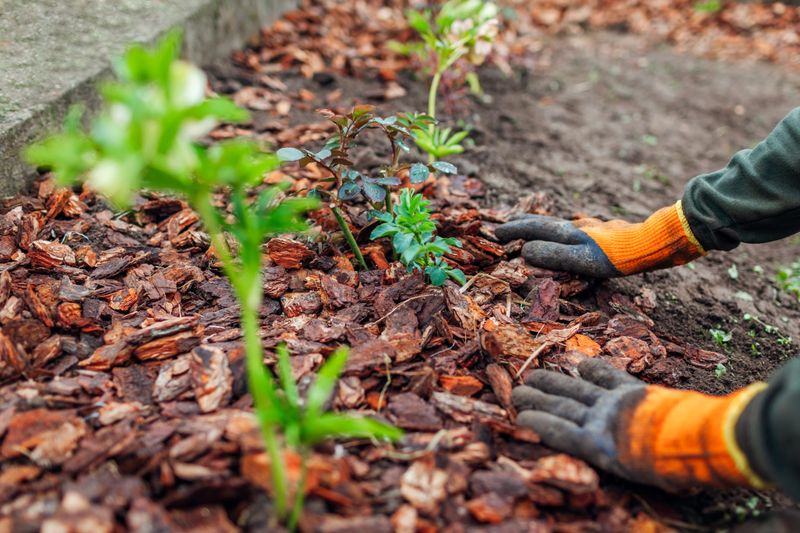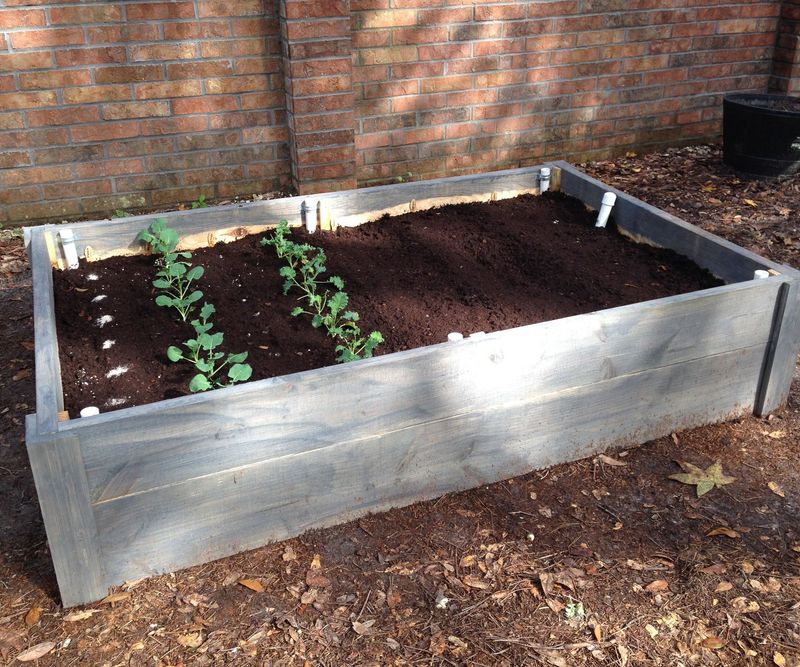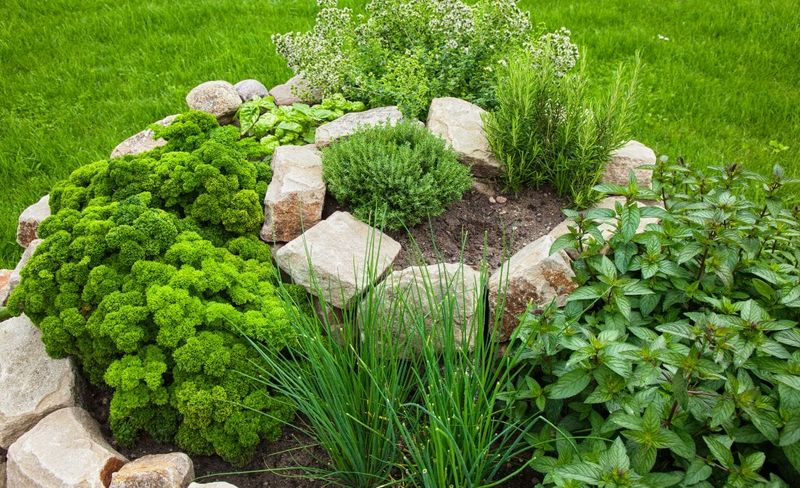Imagine stepping out your back door to freshly grown tomatoes, herbs, and veggies, right from a tiny backyard or even an apartment balcony.
That’s right, you don’t need sprawling fields to cultivate a bountiful harvest. With a little creativity and some savvy hacks, you can turn any small space into a thriving garden.
Let me share some of the best-kept secrets in the world of homesteading that will have you growing plenty of food in no time.
1. Vertical Gardening
Stacking plants upwards can multiply your growing area. Vertical gardening turns any small space into a green oasis by growing plants on walls or using shelves.
This method is perfect for city dwellers or those with limited garden space. You can use anything from purpose-built wall planters to repurposed pallets.
Whether it’s strawberries or leafy greens, vertical gardening makes use of every inch. It’s like having your garden defy gravity.
2. Companion Planting
Certain plants just seem to click, like old friends. I tried companion planting basil with tomatoes, and not only did the basil grow, but the tomatoes tasted better, too.
It’s like a natural matchmaking system for plants which boost growth and keep pests away. Plus, I love how it helps me avoid using chemical pesticides and lets nature take care of things.
Companion planting is one of those little gardening tricks that really pays off!
3. Square Foot Gardening
A method that turns gardening into a precise art. Square foot gardening involves dividing your garden into square-foot sections, each housing a different plant.
This technique maximizes space and simplifies planting. It’s fantastic for beginners, offering a structured approach to gardening.
By focusing on manageable areas, you can effectively control weeds and pests. It’s like having a mini-farm organized to produce a diverse array of veggies.
4. Container Gardening
Growing food in containers offers flexibility and convenience. Container gardening allows you to grow plants on patios, balconies, or windowsills.
You can move your plants to catch the sun or even bring them indoors during bad weather. This method is ideal for those with limited space or poor soil conditions.
Whether you’re nurturing cherry tomatoes or herbs, containers provide a portable garden. It’s like creating a little green oasis that you can rearrange at will.
5. Trellis Systems
Let your plants climb to new heights. Trellis systems guide climbing plants upwards, saving ground space and improving air circulation.
This is perfect for cucumbers, beans, or peas. By training your plants to grow vertically, you free up garden space for more crops.
It’s a clever way to keep your garden organized while maximizing productivity. Plus, it makes harvesting easier, as everything is at eye level.
6. Raised Bed Gardening
Elevate your gardening with raised beds. This technique improves drainage and soil quality while making it easier to manage plants.
Raised beds give you the freedom to control the soil mixture and reduce compaction. They are ideal for areas with poor native soil or limited space.
With raised beds, you can grow a variety of veggies closely together. It’s like having a personalized space for your plants to thrive.
7. Hydroponics
Growing plants without soil may sound futuristic, but it’s a highly effective and innovative method. Hydroponics uses nutrient-rich water solutions to nurture plants, making it perfect for small spaces.
This technique can be set up indoors, offering a year-round gardening option. From leafy greens to tomatoes, hydroponics works for a wide variety of plants.
It’s a clean, efficient way to garden, eliminating the mess of traditional soil. Imagine having a lush garden right in your kitchen, with fresh produce at your fingertips all year long!
8. Aquaponics
A symbiotic relationship between plants and fish. Aquaponics combines aquaculture and hydroponics, using fish waste to nourish plants.
This system recycles water and nutrients, creating a sustainable gardening method. Perfect for indoor setups, aquaponics can support a variety of plants.
You’ll find yourself tending both a garden and a mini aquarium. It’s a fascinating, eco-friendly way to grow food.
9. Succession Planting
Timing really is everything in gardening. I’ve found that succession planting works wonders for keeping a steady supply of fresh produce.
By sowing seeds in intervals, you get crops at different times, so you’re never overwhelmed with too much at once. It’s like having a constant flow of veggies all season long.
This method is perfect for small spaces since it keeps everything productive, and no spot in your garden goes to waste. It’s a simple yet effective way to make sure your garden always has something to offer.
10. No Dig Gardening
Embrace nature by letting the soil do the work. No dig gardening minimizes soil disturbance, improving soil health and reducing weeds.
By layering organic material on the surface, this method creates fertile ground for your plants. It’s ideal for those wanting a low-maintenance approach.
You’ll be amazed at how productive a garden can be without back-breaking digging. It’s nature’s way of gardening, simplified.
11. Espalier Technique
Turn your garden walls into fruit-bearing works of art with espalier. This technique trains trees to grow flat against a wall, making the most of limited space while adding a unique aesthetic.
Espalier is perfect for fruit trees like apples or pears, because it maximizes light exposure and airflow, ensuring healthy growth. It’s a nice way to incorporate trees into smaller gardens.
Not only will you enjoy fresh fruit, but you’ll also have a stunning visual display that elevates your outdoor space. A perfect balance of nature and design!
12. Hanging Gardens
Suspend your plants above ground level. Hanging gardens use baskets or hanging pots to grow plants vertically, saving space and adding layers.
Perfect for strawberries or flowers, they create a cascade of greenery. This method is great for balconies or patios, offering a creative use of vertical space.
You might find delight in watching your garden dangle above, swaying gently in the breeze. It’s a playful twist on traditional gardening.
13. Keyhole Gardens
A clever layout with a built-in composting system. Keyhole gardens are circular raised beds with a central composting basket that enriches the soil.
Perfect for small spaces, they conserve water and maximize productivity. This design allows easy access to plants, making maintenance a breeze.
It’s a sustainable way to recycle kitchen waste directly into your garden. Imagine having a tiny ecosystem right in your backyard.
14. Window Sill Gardening
Transform your window sills into a mini herb garden, perfect for growing fresh herbs indoors. Using natural sunlight, this method keeps plants thriving year-round.
Ideal for kitchens, you’ll have fresh herbs within reach for cooking. Plus, the aroma and convenience make it a joy to have a little green space right by your window.
It’s an easy, effective way to add a touch of nature to your home.
15. Intensive Planting
Pack more into less space. Intensive planting involves closely spacing plants to maximize the use of available area.
This method boosts yields and shades out weeds, reducing maintenance. It’s perfect for small gardens, allowing you to grow more in less.
By carefully selecting companion plants, you can create a dense, productive patch. It’s like having an abundant vegetable market right outside your door.
16. Urban Beekeeping
Bring bees into your city life. Urban beekeeping not only supports local ecosystems but also provides your garden with essential pollinators.
Rooftops or small yards can host beehives, offering honey and aiding plant reproduction. It’s an exciting way to connect with nature in an urban setting.
You’ll enjoy the sweet rewards of honey and a thriving garden. Plus, it’s a conversation starter that truly buzzes with interest.
17. Mushroom Cultivation
Growing mushrooms in your own backyard is a unique and rewarding way to enhance your garden. Using shaded areas and organic materials like logs or straw, you can cultivate gourmet mushrooms right at home.
It’s perfect for small spaces and adds an exciting, sustainable twist to your gardening routine. Rather than foraging, you can enjoy home-grown mushrooms whenever you like.
The process is surprisingly easy, and the best part? Imagining those delicious sautéed mushrooms on your dinner plate, knowing you grew them yourself!
18. Permaculture Design
Designing a self-sustaining ecosystem with permaculture is about creating a garden that works in harmony with nature.
I love how it integrates plants, animals, and natural elements into a balanced system. It’s a smart way to make the most of your space while respecting the environment.
Permaculture encourages a productive landscape that supports both plants and wildlife, creating a sustainable garden where everything has a purpose.
19. Cold Frame Gardening
Extend your growing season with a simple structure. Cold frames are mini-greenhouses that protect plants from cold weather, allowing for early planting and late harvesting.
This method suits small gardens, offering year-round growing opportunities.
By capturing solar energy, cold frames create a warm microclimate for your plants. It’s like giving your veggies a head start in the race against the seasons.
20. Community Gardening
Community gardening is a wonderful way to unite people through a shared love of plants. If you don’t have your own garden space, this approach allows you to enjoy gardening alongside others.
It’s all about pooling resources, sharing knowledge, and exchanging tips (and seeds!). Not only do you get the satisfaction of growing your own food, but you also build meaningful connections with neighbors.
The sense of teamwork and the joy of contributing to local food production make community gardens a rewarding experience for everyone involved.
21. Gutter Gardens
Repurpose rain gutters into hanging planters. Gutter gardens are fantastic for growing shallow-rooted plants like lettuce and herbs.
Mounted on walls or fences, they utilize vertical space efficiently. This method is great for urban environments, turning unused surfaces into productive gardens.
You’ll enjoy the creativity and practicality of this space-saving hack. Plus, it’s a fun way to upcycle materials into something green.
22. Seed Saving
Preserving your garden’s future through seed saving is one of the most rewarding practices. Collecting seeds from my best plants to grow in the next season ensures I’m cultivating varieties in my garden.
Not only is it a sustainable way to maintain plant diversity, but it also helps cut down on costs. Over time, you become more self-reliant with your own stock of seeds.
There’s something satisfying about watching plants grow from seeds you saved yourself. It feels like you’re truly connected to your garden’s growth.
23. Mulching
Blanket your garden with protective cover. Mulching involves spreading materials like straw or wood chips around plants to conserve moisture and suppress weeds.
This method improves soil health and reduces the need for watering. Perfect for any garden size, it’s an easy way to boost productivity.
You’ll find your plants happier and your workload lighter. Imagine the peace of mind knowing your garden is well-covered.
24. Wicking Beds
Create a self-watering paradise. Wicking beds use a reservoir and soil column to draw water to plant roots, reducing the need for frequent watering.
This system is ideal for hot climates or busy gardeners. It conserves water and ensures consistent moisture levels.
You’ll enjoy the convenience and efficiency of this setup. Imagine a garden that practically waters itself while you relax.
25. Herb Spirals
Spiral your way to more herbs. Herb spirals use a coiled design to maximize space and create microclimates for different herbs.
This method allows plants to thrive together, each at their preferred conditions. It’s perfect for small spaces and it offers easy access to a variety of herbs.
You’ll love the functionality of this design. Imagine stepping out to pick fresh basil or thyme from your spiral garden.


